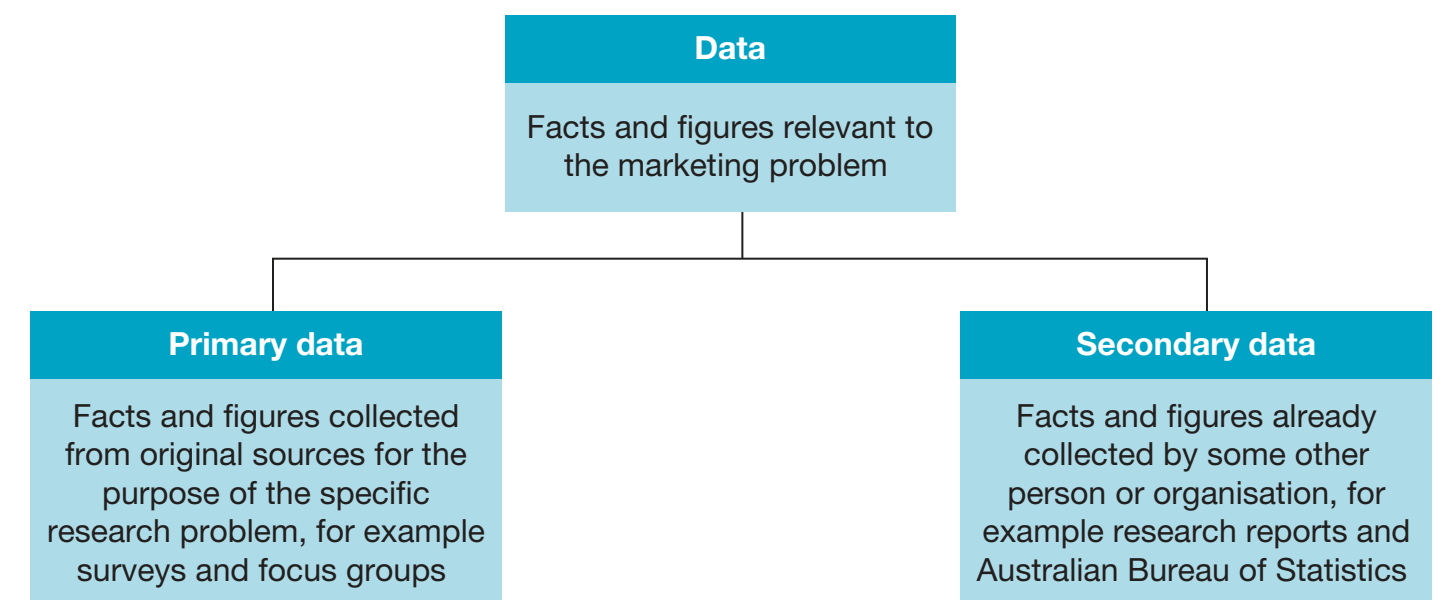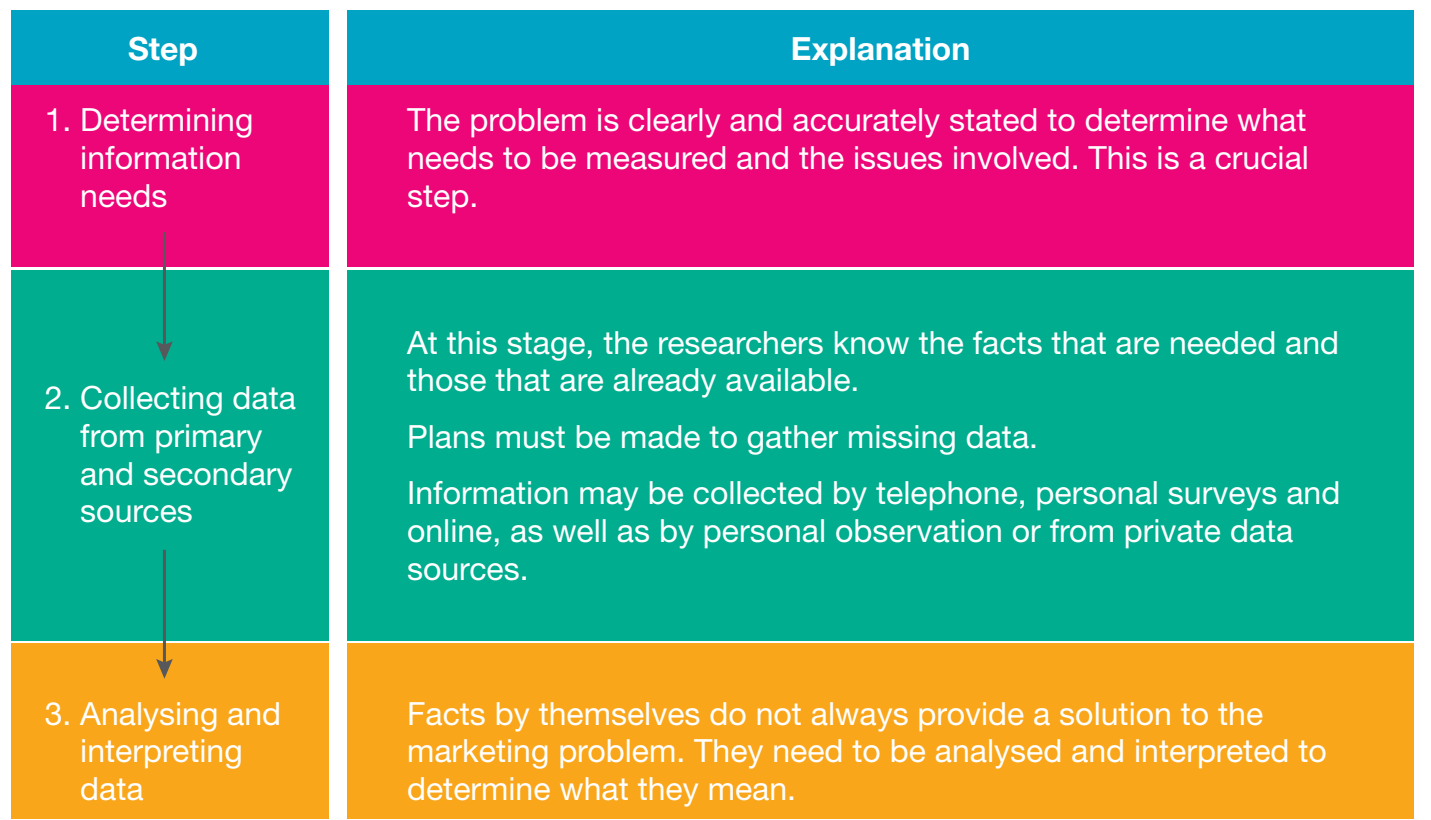Photo AI
Last Updated Sep 24, 2025
Market Research Overview Simplified Revision Notes for SSCE HSC Business Studies
Revision notes with simplified explanations to understand Market Research Overview quickly and effectively.
285+ students studying
Market Research Overview
Definition and Significance
- Market Research: A structured procedure utilising organised methods to gather, document, and evaluate data pertinent to marketing.
- Importance in Marketing: Essential for formulating marketing strategies and facilitating informed decision-making.
Market Research: A structured procedure utilising organised methods to gather, document, and evaluate marketing data.
Understanding Consumer Behaviour and Market Dynamics
-
Consumer Behaviour Insight: Understanding consumer requirements and habits results in enhanced customer satisfaction and fidelity.
infoNoteRemember: Understanding consumer behaviour is crucial for market success.
-
Market Dynamics Analysis: Examining market movements and competition provides strategic insights for optimal business positioning.
Impact on Business Decision-Making
- Strategic Decision-Making: Data-driven decisions are fundamental for successful strategic planning and implementation.
- Real-World Examples:
- Netflix: Employs data analytics to choose popular programmes like "Stranger Things," boosting subscriber retention by 20%.
- Amazon: Utilises data to streamline supply chains, enabling quicker delivery, and enhances customer satisfaction by 15%.
Types of Market Research
Introduction
- Primary Market Research: Direct data acquisition, tailored to address specific business needs.
- Secondary Market Research: Entails using data already existing from various sources to resolve business enquiries.
Primary Market Research: Data collected directly from the target demographic, specifically customised to organisational requirements.
Secondary Market Research: Involves the utilisation of previously collected data for decision-making processes.
Comparison of Research Types
| Feature | Primary Research | Secondary Research |
|---|---|---|
| Data Collection | - Directly acquired |
- Tailored to specific needs
| - From existing sources
- Generally applicable |
| Cost | - Often greater
- Involves original data collection expenses |
| - Typically lower
- Data is pre-existing |
| Timeframe | - Extended due to collection procedure
- Requires detailed inquiry
| - Quicker as data is available
- Focuses on analysis |
| Customisation | - Precisely aligned with queries
- Organisation-specific insight
| - Limited personalisation
- General insights |

In-Depth Analytical Discussion
-
Adaptability:
- Primary research is ideal for exact targeting.
- Secondary research offers broad context, valuable for initial comprehension.
-
Role of Technology:
- Examples encompass how AI accelerates procedures and how big data boosts precision in findings.
Engaging Case Studies
Primary Research Scenario
- Imagine:
- A tech company conducting user interviews to enhance an app feature.
- Provides direct consumer insights impacting product functionality.
Secondary Research Scenario
- Imagine:
- A retailer forecasting seasonal trends using social media and market analyses.
- Assists in predicting demand effectively.
Overview of Primary Data Collection Methods
Primary data collection is essential for acquiring tailored, direct information for specific research objectives.
- Relevance: Data collected directly is pertinent to the study's objectives.
- Precision: Supplies accurate and specific information.
- Customised Acquisition: Data collection is deliberately aligned with the research topic.
Types of Primary Data Collection Methods
\begin{array}{|c|p{0.2\textwidth}|p{0.2\textwidth}|p{0.2\textwidth}|} \hline \textbf{Method} & \textbf{Key Features} & \textbf{Advantages} & \textbf{Disadvantages} \\ \hline \text{**Surveys**} & \text{Utilises questionnaires in various formats} & \text{Efficient with large sample sizes} & \text{Potential for **response bias**} \\ \text{**Observations**} & \text{Involves data collection in natural environments} & \text{Captures real-time behaviour} & \text{Time-consuming and costly} \\ \text{**Focus Groups**} & \text{Facilitated group discussions for insights} & \text{Provides in-depth understanding} & \text{May be influenced by dominant personalities} \\ \hline \end{array}
Importance of Secondary Data in Market Research
- Secondary Data is crucial in market research for strategic formulation and trend analysis.
- In the retail sector, secondary data assists in forecasting sales trends across various categories.
- Fashion Retail: Utilises sales data to predict popular styles in upcoming seasons, aiding in effective inventory management.
- Electronics: Focuses on past sales to anticipate demand peaks for new technology releases, optimising stock levels.
- This predictive capability reduces costs, improves planning, and aligns with market demands efficiently.
Introduction to Sampling Techniques
-
Sampling:
- Selecting a subset from a population to derive insights.
- Fundamental in market research by minimising cost and time.
- Provides a representative overview applicable in real-world contexts.
-
Significance of Sampling:
- Mirrors crucial population trends
Critical Role of Correct Techniques:
- Choosing the appropriate sampling method can significantly reduce errors and prevent misleading findings.
Types of Sampling Methods
Random Sampling
Random Sampling: Every population member has an equal chance of being selected.
- Step-by-Step Guide:
- Define the entire population clearly.
- Assign numbers to each member using Excel or other software.
- Choose using a random number generator for unbiased outcomes.
Stratified Sampling
Stratified Sampling: Population divided into strata; samples drawn from each subgroup.
- Ensuring Precision:
- Ensures subgroup representation and enhances result accuracy.
- Real-Life Example:
- Example: Conducting customer satisfaction surveys across different age demographics.
Convenience Sampling
Convenience Sampling: Selection based on ease of access.
- Bias: High risk of bias as selection is based on convenience.
- Applications: Valuable for quick insight collection in exploratory research phases.


Advantages and Limitations
Introduction to Data Analysis
What is Data Analysis in Market Research?
- Data Analysis: Crucial for interpreting complex datasets.
- Plays a key role in understanding consumer behaviour and identifying trends.
- Facilitates strategic decisions via actionable insights.
Data Analysis: In market research, data analysis helps protect market positions and develop effective strategies.
Key Roles of Data Analysis
- Interpreting Complex Data:
- Example: Analysing consumer feedback to evaluate the success of a marketing campaign.
- Market Trend Identification:
- Offers insights into evolving consumer preferences.
- Supporting Strategic Decisions:
- Empowers informed decisions based on comprehensive data evaluations.
Ethical Considerations
- Ethical Considerations: Guidelines ensuring research respects participants' rights and data privacy.
- Significance: Ensures public trust and valid outcomes.
- Consequences: Legal repercussions and potential loss of brand credibility.
Informed Consent
- Informed Consent: Secure explicit participant consent, ensuring understanding of research purpose and data application.
- Best Practices: Clear documentation and effective communication.
- Enhanced Example: Imagine a company "Researcho Ltd." faced backlash for circumventing consent protocols, resulting in participant distrust and legal repercussions. Efforts to address it involved public apologies and improved consent procedures.
Privacy Concerns in Technological Data Collection
- Digital data collection heightens privacy concerns.
- Technological Risks:
- Surveillance
- Data misapplication
- Case Study: In a real-world instance, "TechSurvey Inc." faced public backlash due to unauthorised data sharing, leading to a loss of client contracts and public trust.
Common technological risks encompass surveillance and misapplication, necessitating vigilant data management.
500K+ Students Use These Powerful Tools to Master Market Research Overview For their SSCE Exams.
Enhance your understanding with flashcards, quizzes, and exams—designed to help you grasp key concepts, reinforce learning, and master any topic with confidence!
270 flashcards
Flashcards on Market Research Overview
Revise key concepts with interactive flashcards.
Try Business Studies Flashcards29 quizzes
Quizzes on Market Research Overview
Test your knowledge with fun and engaging quizzes.
Try Business Studies Quizzes85 questions
Exam questions on Market Research Overview
Boost your confidence with real exam questions.
Try Business Studies Questions4 exams created
Exam Builder on Market Research Overview
Create custom exams across topics for better practice!
Try Business Studies exam builder24 papers
Past Papers on Market Research Overview
Practice past papers to reinforce exam experience.
Try Business Studies Past PapersOther Revision Notes related to Market Research Overview you should explore
Discover More Revision Notes Related to Market Research Overview to Deepen Your Understanding and Improve Your Mastery
